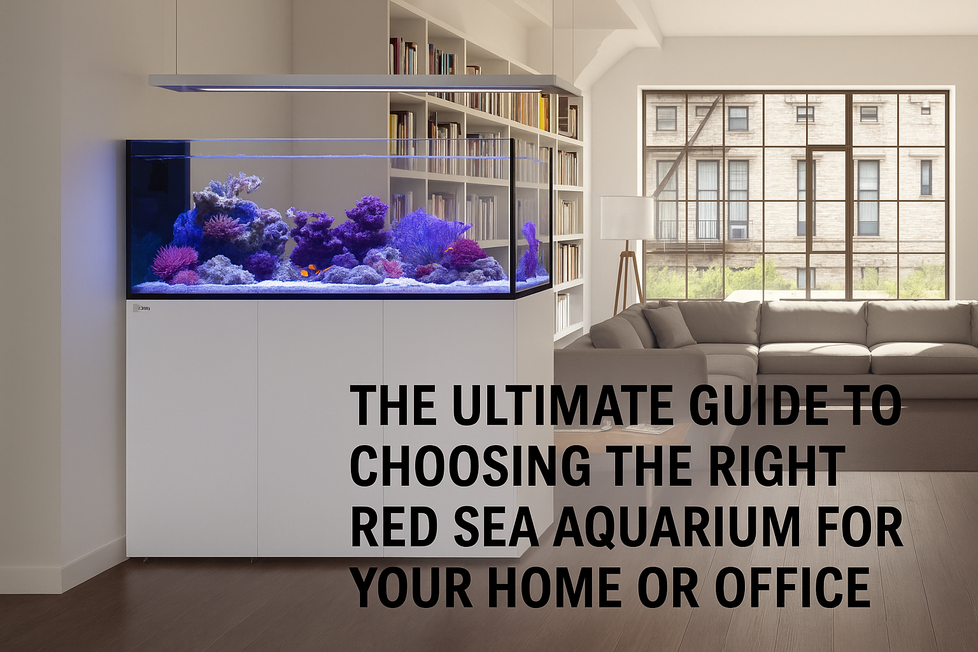Maintaining the right temperature in your aquarium is crucial for the health and well-being of your aquarium. Excessive heat can cause stress, illness, and even death in fish and other marine life.
Aquarium chillers are essential tools for controlling heat and ensuring a stable environment. This comprehensive guide will explore the importance of aquarium chillers, how they work, and tips for effectively managing aquarium heat.
We’ll also highlight some top products available at Charterhouse Aquatics.
Why Do You Need an Aquarium Chiller?
1. Temperature Stability: Many aquatic species require specific temperature ranges. Fluctuations can lead to stress and disease.
2. Equipment Heat: Lights, pumps, and other equipment can increase the water temperature. Chillers help mitigate this heat.
3. Seasonal Changes: During hot weather, it can be challenging to maintain the ideal temperature. Chillers are crucial for keeping water cool.
How Do Aquarium Chillers Work?
Aquarium chillers operate similarly to air conditioners. They use a refrigerant to absorb heat from the water, which is then dissipated through a heat exchanger. The chilled water is then recirculated back into the aquarium, maintaining a consistent temperature.
Types of Aquarium Chillers & Cooling
1. In-Line Chillers
Overview: In-line chillers are installed externally and connected to the aquarium’s filtration system via pipe work and usually fe via a separate pump. They are ideal for larger tanks & very efficient.
Benefits:
- Suitable for large setups
- Efficient cooling
- Easy to install without disturbing the tank
Recommended Product: Teco TK-150 Chiller - This in-line chiller is known for its reliability and efficiency, perfect for larger tanks.
2. Cooling Fans
Probably the most common method of aquarium cooling, fans can help evaporate water, reducing heat. They are a cost-effective and easy way to manage and remove heat from your aquarium.
Recommended Product: D-D Ocean Breeze Cooling Fan
3. Drop-In Chillers
Overview: Drop-in chillers have a cooling coil that is placed directly in the sump or aquarium. They are easier to install but may take up more space.
Benefits:
- Simple installation
- No plumbing required
- Suitable for sumps
Tips for Controlling Heat in Your Aquarium
1. Monitor Temperature Regularly
Regular monitoring helps you detect temperature fluctuations early and take corrective measures.
Recommended Product: Digital Thermometer - This thermometer provides accurate readings to help you maintain optimal temperatures.
2. Reduce Lighting Duration
High-intensity lighting can increase water temperature. Reduce the duration of lighting to prevent overheating.
3. Use Fans
Aquarium fans can help evaporate water, reducing heat. They are a cost-effective way to manage temperature.
4. Maintain Proper Ventilation
Ensure your aquarium has good airflow around it. Avoid placing it in enclosed spaces or near heat sources.
5. Keep the room cool
While your aquarium ma be producing heat of its own, the tank temp will be governed by the temperature of the room. If you have a way to keep that room cooler, then this can only help!
6. Perform Regular Water Changes
Regular water changes with cooler water can help manage temperature spikes, especially during hot weather.
7. Use Insulation
Insulate the aquarium or sump to keep the cool temperature stable. Avoid direct sunlight exposure.
Conclusion
Controlling heat in your aquarium is essential for maintaining a healthy environment for your aquatic life. Aquarium chillers are invaluable tools for managing temperature, especially during hot weather or in tanks with heat-generating equipment. By monitoring temperature, reducing lighting duration, using fans, and performing regular water changes, you can effectively control heat and ensure the well-being of your aquarium inhabitants.
For top-quality aquarium chillers and other products, visit Charterhouse Aquatics. Trust Charterhouse Aquatics to provide expert advice and the best products to keep your aquarium thriving.


